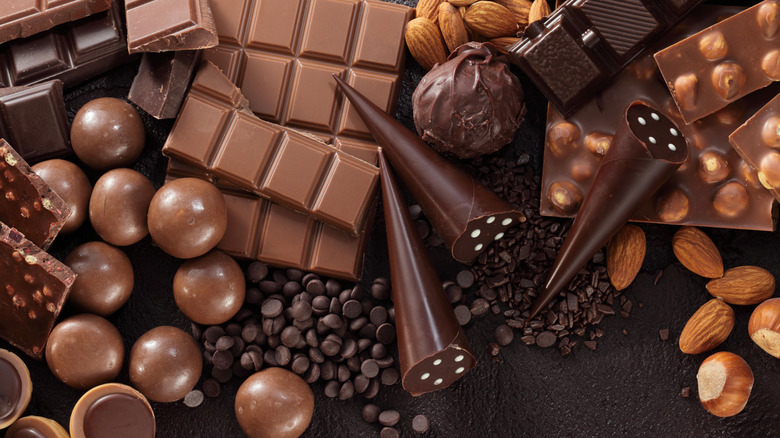What Eating Chocolate Does To Your Face
Chocolate has grown a bad reputation when it comes to skincare. For years, we've all been told that the delicious treat causes our pesky acne breakouts. But researchers say that's not necessarily true, although there are studies that support both sides of the chocolate argument.
Experts say some information shows a link between high glycemic index foods and breakouts, especially for acne-prone skin. These foods are rich in sugar and carbohydrates, spiking your blood sugar and insulin levels as a result. This spike can jumpstart production of oils in your face, causing breakouts (via CNN). "Spikes in insulin are acne-genic, so we don't want high-glycemic diets," Dermatologist Patricia Farris, a fellow of the American Academy of Dermatology, told CNN. "We've connected the dots there ... but we haven't completely connected the dots on chocolate."
Some dermatologists agree it's not necessarily the chocolate that causes breakouts. Dairy products and unhealthy fats can be the culprits, according to Walk-in Dermatology. Breakouts can also be entirely unrelated to your nutrition — age, genetics, hormones, and stress levels are other factors that can contribute to your skin health.
How chocolate can have negative and positive impact on skin
However, in some studies, participants did experience more pimples after eating chocolate. One 2016 study found that participants who ate milk chocolate instead of jelly beans — but had the same glycemic load as their counterparts — had five more pimples on average. Other studies used dark chocolate or 100% chocolate in capsule form and still found the participants experienced more acne (via CNN).
But it's not all bad, chocolate lovers! Some dermatologists say chocolate with high cacao content, like dark chocolate, could actually provide antioxidants and minerals that benefit your body (via Walk-in Dermatology).
So should you give up chocolate for clearer skin? It depends on how your individual skin reacts to chocolate. If you notice a big difference in your breakouts after consuming chocolate, you may want to switch to a different treat. Generally speaking, avoiding milk and white chocolate may be a safe bet, as they contain high glycemic levels and dairy fat, according to Walk-in Dermatology. And ultimately, dermatologists say a well-rounded diet full of healthy greens, as well as a proper skincare routine, can be key to healthy skin.


